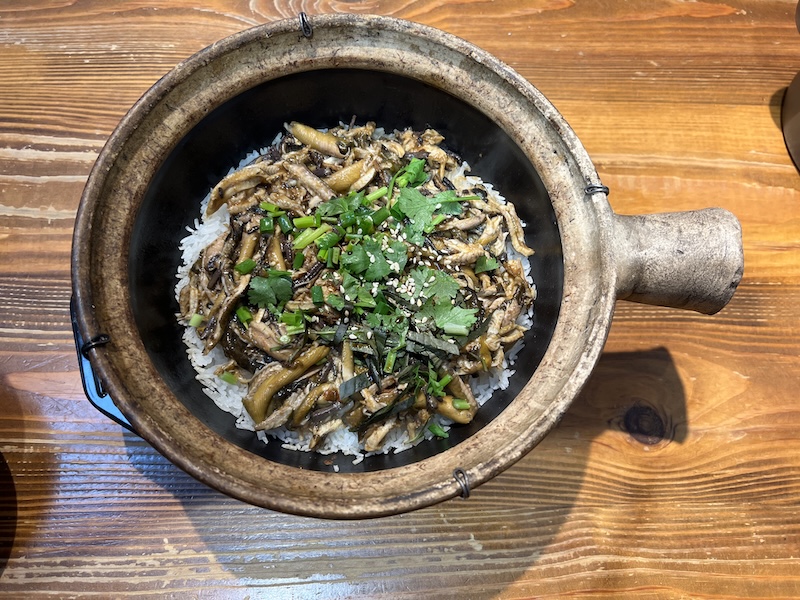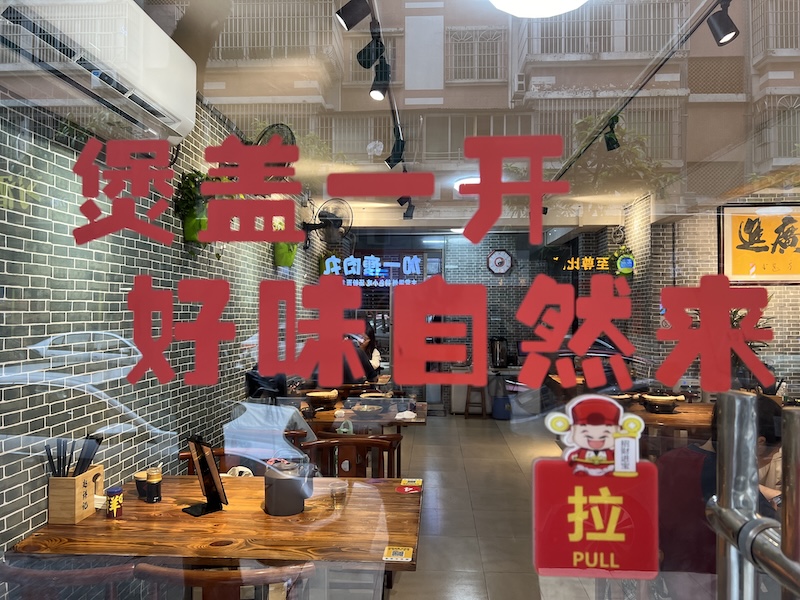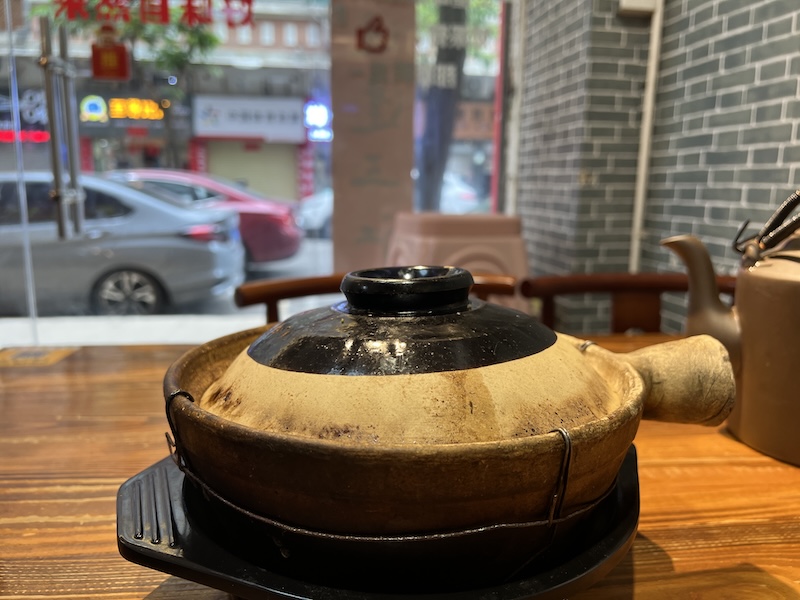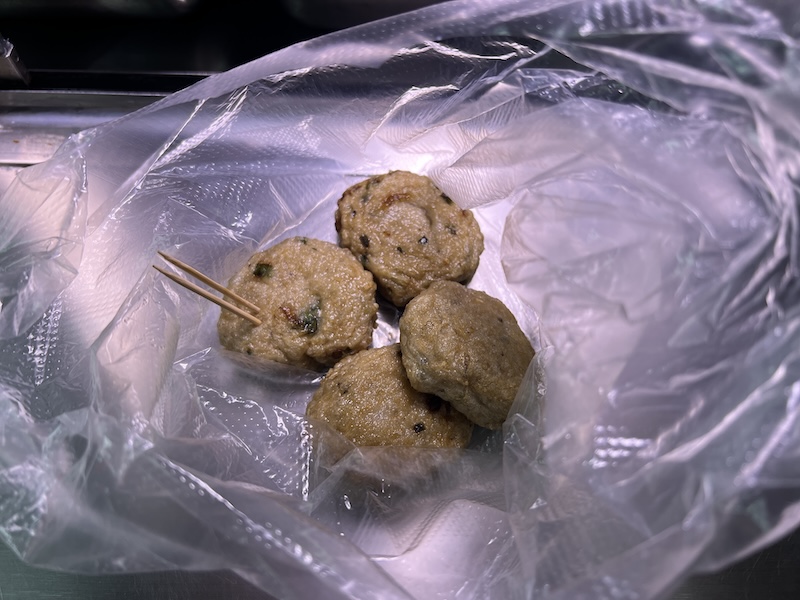In Their Footsteps – The Food of Jiangmen

The train to Shenzhen would depart in the early evening and I debated how to spend the day in Jiangmen. To be honest, there was not very much in this city that I wanted to see, as I was almost always only keen on heritage sightseeing. There were maybe a couple of fortresses here and there, but it would be prohibitively expensive for me to hire a car for a day to see them. One of them was a site of ideological education, and I thought it best to avoid it.
Close to the hotel at which we were staying was a museum with exhibitions on the history of overseas Chinese. I ruled that out as well because I thought the learning from the Kaiping diaolou’s has amply served the purpose. The Diaolou’s are a living history.
It then came upon me that I had not had a chance to have claypot rice. During the car ride with my driver in Kaiping, we talked about local food. A Chikan specialty, the claypot rice was highly recommended by Mr. Guan, my friendly driver. I then began searching for a few options in the area. On my wish list were claypot rice, fried fish cakes and dried mandarin peel coffee.
Almost a Michelin Star – The Claypot Rice of Zhaogongxiang Ji

Zhaogongxiang Ji seemed popular in the food review circle. It would require quite a bit of walk to have the claypot rice and the fried fish cakes, but I had a whole day to kill, so off I went.
I arrived at a little after 2pm and was very nervous when the waitress told me that the chef had already left for the afternoon recess. It would have been exceedingly unfortunate if I did not get to try this claypot rice. And plus, I really did need food at that hour as well.
Somehow the manager told me to order quickly, and I did. Traditionally, Chinese people think of the Asian swamp eel (in Chinese, the yellow eel) to be very nutritious. I was eager to try that in a claypot rice.

It being a claypot specialist, the Zhaogongxiang Ji offers a menu that caters to a wide array of preferences for Chinese diners. Its menu options are quite different from the standard claypot rice restaurants in Hong Kong. Some offers are truly eye-catching to a Hong Kong diner: seabass, meatloaf with shrimp paste, meatloaf with crab, and even fusion claypots like salty eggs with beef and cheese or Thai style claypots.

My claypot came sizzling with mouthwatering aroma. The ritual is to pour some of the soy sauce over the food and close the lid for the soy sauce to seep through the rice. I like my food piping hot, so I dug in soon.
I thought this was Michelin star grade claypot. In any claypot, the rice is the very soul that defines the claypot. It is the most critical technique, the standard by which the quality of the claypot is appreciated.

The claypot rice of Zhaogongxiang Ji was dry, with each grain thoroughly-cooked but with no sogginess. This enables each grain to have a distinct texture within the palate, resulting in a chewiness. This alone is an achievement.
What amazed me further was the fact that the crispy bottom had not one burnt grain of rice. Now, that is new to me. In Hong Kong, the rice is usually a bit burned in the bottom of the claypot, which indicates that the bottom layer of the rice has crisped up. I spooned a whole sheet of crisped up rice without it being stuck to the bottom of the claypot because of its being burnt.

In any authentic claypot rice, the rice is added raw to the claypot. As such, the claypot serves as the rice cooker on an open fire stove. That is how the rice crisps up at the bottom. In this kind of cooking, timing is the very key that makes or breaks a claypot rice. The manager told me that the chef never fails in his timing, and that is how the rice turns up crispy with not a grain of it burnt.
The Asian swamp eel was a perfect combination in this claypot rice. The eel had a natural sliminess. When it is well-seasoned and placed atop the rice, its flavors are fused with the rice beneath. The natural sliminess became a smooth sensation when eaten with the rice, as if you can slurp it.
I highly recommend this claypot rice restaurant in Jiangmen.
The Fried Fish Cakes of Jiangmen

It took me 30 minutes to walk to Zhaogongxiang Ji, and then another hour of walk to get to this very local shop for fish cakes.
There was not very much to see as I walked through a quieter part of Jiangmen City. It was a boring urban landscape, and I managed to find no cafe on the way that offered chenpi (dried mandarin peel) coeffe. The clouds were gathering. I pushed on because I really wanted to try the fried fish cakes, as a popular local food in Jiangmen.

There was a line at this small shop already when I arrived. I had a nice chat with the locals there, as it was clear to everybody that I was a tourist. Batches of fish cakes were being fried. I ordered a few and really enjoyed them as they were piping hot, bouncing in my mouth.
I figured that I had better get back to the hotel soon, it was a long walk to get to this part of the city. As heavy rain befell me, I decided that I must take public transportation. This was a good conclusion to my trip in Kaiping and Jiangmen.
